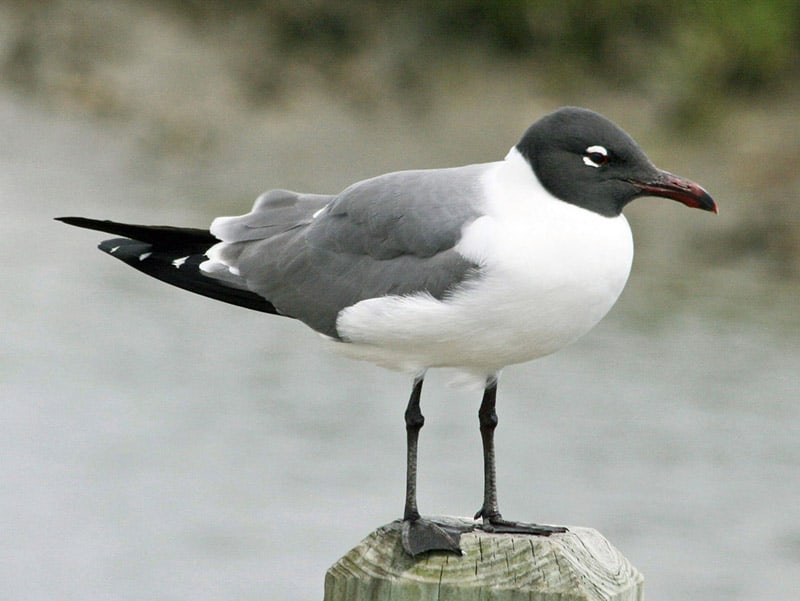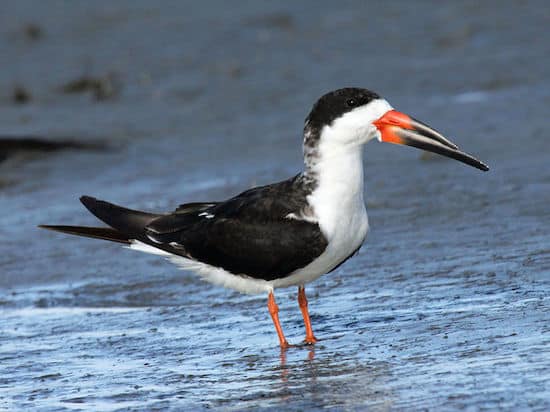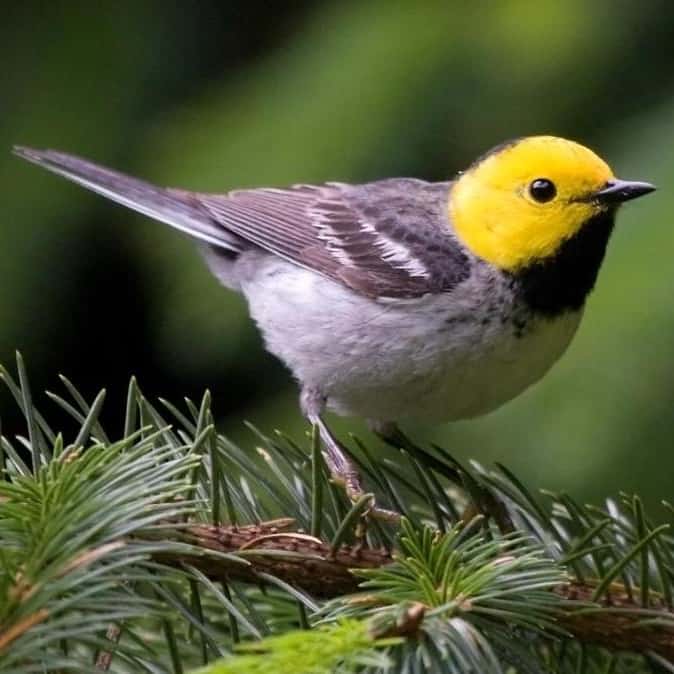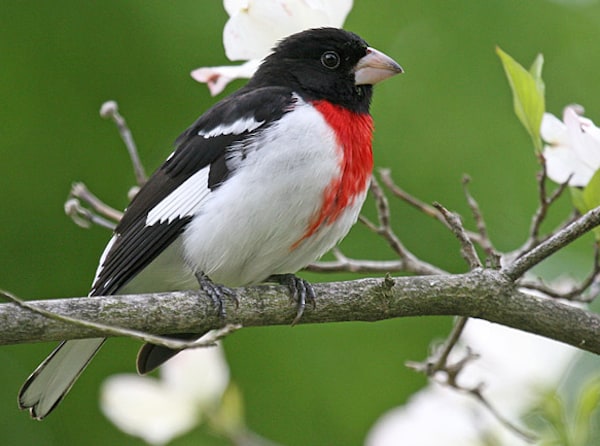The laughing gull is an extremely handsome bird. A summer adult wears dark gray on the wings and back, contrasting with a snow-white body and inky black head. White crescents outline the eyes, and a red bill and legs complete the image. The wing tips are solid black. Male and female laughing gulls look alike.
Winter adults are less striking, having only a smudge of black on the head and a black bill and legs at that season. Immatures are sooty gray and dirty white, with a white rump and a wide black band across the end of the tail, but they are often seen together with the more recognizable adults.
Listen for
This bird is named for its call, which sounds very much like someone laughing loudly, in either single notes—Ahh! Ahhh!— or in a series—Ah-ah-ah-ah-ah!
Find it
The laughing gull is the most common black-headed gull of eastern beaches, and its ringing calls are one of the familiar sounds of summer all along the Atlantic and Gulf coasts. Social and gregarious, the laughing gull has adapted well to humans and is quick to take advantage of the amenities of civilization—from nesting on artificial spoil banks to feeding on refuse from fishing boats.
A bird of beaches, bays, and salt marshes, the laughing gull is seldom seen more than a few miles inland at any season, though occasionally an individual may be blown far astray by a hurricane or other major storm.
Feed it
The diet of the laughing gull is varied and includes everything from small fish to insects, crustaceans, snails, and garbage. Laughing gulls may invade a tern colony to take eggs or even small chicks, but they do not do this as commonly as some larger gulls do. Laughing gulls may also visit flooded fields to skim off earthworms and other invertebrate prey.
Nesting Behavior
Laughing gulls are colonial ground nesters, often choosing small, low, island locations with no predatory mammals. Many birds arrive at the colony site a full month before breeding begins to secure the best nest locations. The nest is a loose cup of grass and sticks placed in a shallow scrape and is made by both sexes.
After the three to four eggs are laid, the male shares the 20-day incubation duties. Both parents feed their newly hatched young as the chicks wander near the nest until they can fly at five weeks.
WOW!
Laughing Gulls will chase other birds to try to steal their food. They usually chase terns, which are smaller, but they will also harass birds as large as Brown Pelicans and Ospreys.




